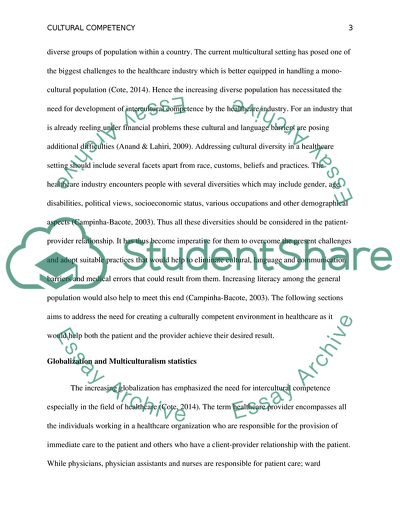Cite this document
(Cultural Competency in the Healthcare Industry Research Paper Example | Topics and Well Written Essays - 2250 words, n.d.)
Cultural Competency in the Healthcare Industry Research Paper Example | Topics and Well Written Essays - 2250 words. https://studentshare.org/culture/1850314-the-importance-of-intercultural-communication-skills-in-the-health-science-field
Cultural Competency in the Healthcare Industry Research Paper Example | Topics and Well Written Essays - 2250 words. https://studentshare.org/culture/1850314-the-importance-of-intercultural-communication-skills-in-the-health-science-field
(Cultural Competency in the Healthcare Industry Research Paper Example | Topics and Well Written Essays - 2250 Words)
Cultural Competency in the Healthcare Industry Research Paper Example | Topics and Well Written Essays - 2250 Words. https://studentshare.org/culture/1850314-the-importance-of-intercultural-communication-skills-in-the-health-science-field.
Cultural Competency in the Healthcare Industry Research Paper Example | Topics and Well Written Essays - 2250 Words. https://studentshare.org/culture/1850314-the-importance-of-intercultural-communication-skills-in-the-health-science-field.
“Cultural Competency in the Healthcare Industry Research Paper Example | Topics and Well Written Essays - 2250 Words”. https://studentshare.org/culture/1850314-the-importance-of-intercultural-communication-skills-in-the-health-science-field.


